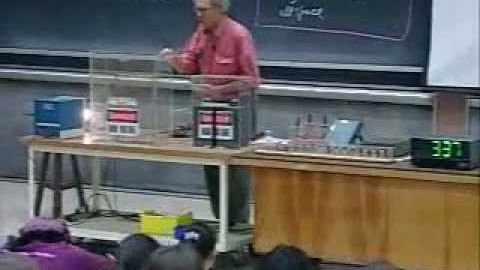
字幕與單字
Lec 07: 電容和場能|8.02 電學和磁學,2002年春季 (Walter Lewin) (Lec 07: Capacitance and Field Energy | 8.02 Electricity and Magnetism, Spring 2002 (Walter Lewin))
00
Cheng-Hong Liu 發佈於 2021 年 01 月 14 日收藏
影片單字
potential
US /pəˈtɛnʃəl/
・
UK /pəˈtenʃl/
- adj.可能的;潛在的;潛在的
- n. (u.)潛力,潛能
- n. (c./u.)潛力;潛能;潛在候選人;勢
A2 初級多益中級英檢
更多 work
US /wɚk/
・
UK /wɜ:k/
- n. (c./u.)成品;工作的成果;產品;作品;工作;職業;工作(場所);(工作等的)成果
- v.t./i.起作用;行得通;運轉;運作;運行;活動;起作用;有效用;(機器等)運轉;活動
- adj.工作相關的
A1 初級多益初級英檢
更多 charge
US /tʃɑrdʒ/
・
UK /tʃɑ:dʒ/
- v.t./i.衝鋒攻擊;收費;為...充電;使承擔責任;委以責任;控告,指控
- n. (c./u.)襲擊;進攻;把...記入帳冊;電量;費;責任;指示;熱情;指控
A2 初級初級英檢
更多 使用能量
解鎖所有單字
解鎖發音、解釋及篩選功能
